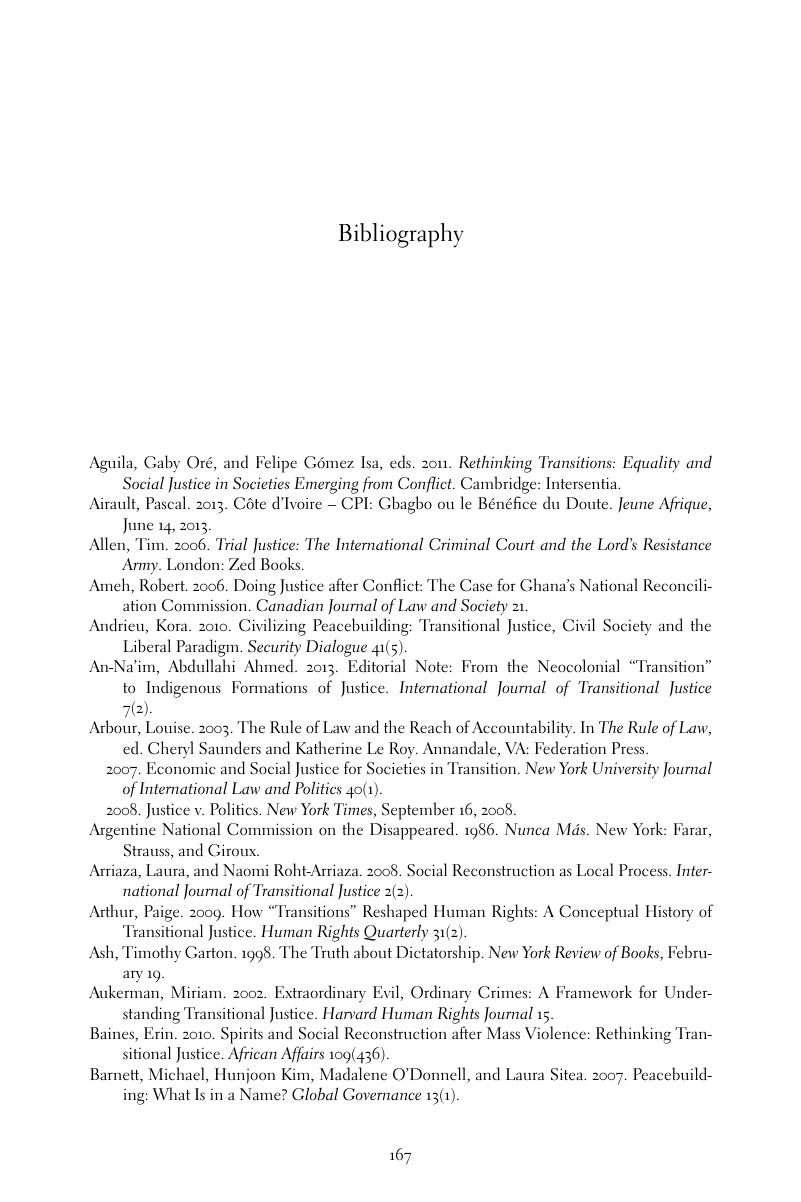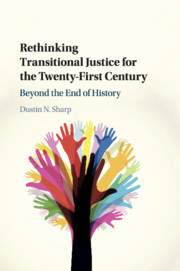Book contents
Bibliography
Published online by Cambridge University Press: 23 February 2018
Summary

- Type
- Chapter
- Information
- Rethinking Transitional Justice for the Twenty-First CenturyBeyond the End of History, pp. 167 - 181Publisher: Cambridge University PressPrint publication year: 2018



